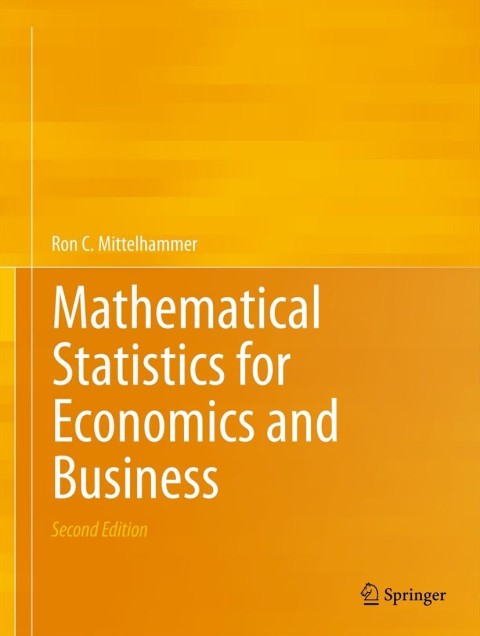Testing for Independence in a Bivariate Normal Population Distribution. Let (left(X_{i}, Y_{i}ight), i=1, ldots, n) be a
Question:
Testing for Independence in a Bivariate Normal Population Distribution. Let \(\left(X_{i}, Y_{i}ight), i=1, \ldots, n\) be a random sample from some bivariate normal population distribution \(N(\boldsymbol{\mu}, \boldsymbol{\Sigma})\) where \(\sigma_{1}^{2}=\sigma_{2}^{2}\). In this case, we know that the bivariate random variables are independent iff the correlation between them is zero. Consider testing the hypothesis of independence \(H_{0}: ho=0\) versus the alternative hypothesis of dependence \(H_{a}: ho eq 0\).
(a) Define a size . 05 GLR test of the independence of the two random variables. You may use the limiting distribution of the GLR statistic to define the test.
(b) In a sample of 50 observations, it was found that \(\sigma_{x}^{2}\) \(=5.37, s_{y}^{2}=3.62\), and \(s_{x y}=.98\). Is this sufficient to reject the hypothesis of independence based on the asymptotically valid test above?
(c) Show that you can transform the GLR test into a test involving a critical region for the test statistic \(w=s_{x y} /\left[\left(s_{x}^{2}+s_{y}^{2}ight) / 2ight]\).
(d) Derive the sampling distribution of the test statistic W defined in
c) under \(H_{0}\). Can you define a size .05 critical region for the test statistic? If so, test the hypothesis using the exact (as opposed to asymptotic) size 05 GLR test.
Step by Step Answer:

Mathematical Statistics For Economics And Business
ISBN: 9781461450221
2nd Edition
Authors: Ron C.Mittelhammer





